Introduction to Autism Spectrum Disorder and DSM-5
The Diagnostic and Statistical Manual of Mental Disorders, Fifth Edition (DSM-5), provides a comprehensive framework for diagnosing Autism Spectrum Disorder (ASD). It consolidates previous diagnostic categories, such as Autistic disorder and Asperger's syndrome, into a single spectrum that captures the diverse presentations of autism. This article explores the detailed criteria outlined in DSM-5, the assessment tools used, classification of severity levels, and the qualifications necessary for accurate diagnosis, aiming to deepen understanding of this complex neurodevelopmental condition.
Core Diagnostic Criteria for ASD in DSM-5
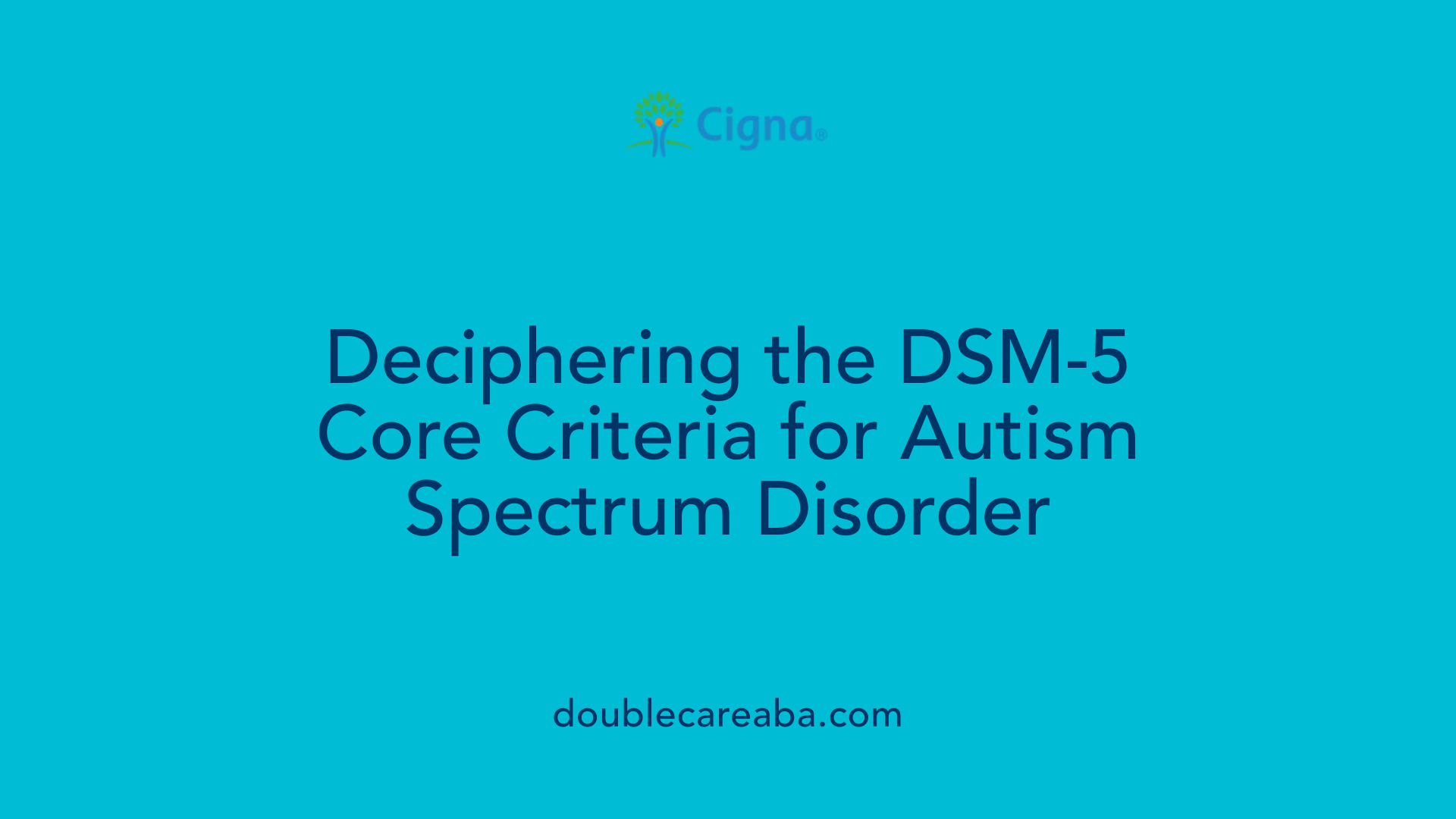
What are the DSM-5 diagnostic criteria for autism spectrum disorder?
The DSM-5 sets specific standards for diagnosing autism spectrum disorder (ASD). It requires the presence of persistent deficits in social communication and social interaction across different situations. These social difficulties encompass challenges in social-emotional reciprocity, nonverbal communication, and the ability to develop and maintain relationships.
Symptoms must be observable early in life, a period defined as the early developmental phase. However, they may not be fully apparent until social demands increase or are masked by learned behaviors later on.
In addition to social communication issues, individuals must exhibit at least two of four specific behaviors related to restricted or repetitive patterns. These include stereotyped movements or speech, a strong preference for routines, highly focused interests, or atypical reactions to sensory stimuli.
It is important to note that these symptoms can be present currently or documented from the past. They should not be better explained by other conditions such as intellectual disability or other neurodevelopmental disorders, although ASD can occur alongside these conditions.
The severity of ASD varies, and the DSM-5 classifies it into three levels:
| Severity Level | Support Required | Typical Behaviors | Description |
|---|---|---|---|
| Level 1 | Requiring support | Mild social and behavioral challenges, able to function with minimal support | Individuals may have noticeable social difficulties but can communicate and participate in activities with some assistance |
| Level 2 | Requiring substantial support | Marked deficits in social communication, frequent behavioral issues | Requires significant support to engage in social interactions and manage behaviors |
| Level 3 | Requiring very substantial support | Severe deficits, limited verbal communication, substantial behavioral challenges | Needs intensive support in social, behavioral, and daily functioning areas |
These criteria facilitate a comprehensive diagnosis that considers the individual's needs and support requirements, ranging from mild to severe.
Diagnosis can be applied across a wide age spectrum, from early childhood to adulthood, emphasizing that ASD is a lifelong condition, although symptoms and their manifestation may evolve over time.
In sum, the DSM-5’s approach to ASD diagnosis emphasizes a multi-dimensional evaluation of social-communication deficits and restricted behaviors, operationalized within specific severity levels to tailor support and interventions effectively.
Social Communication Deficits in ASD
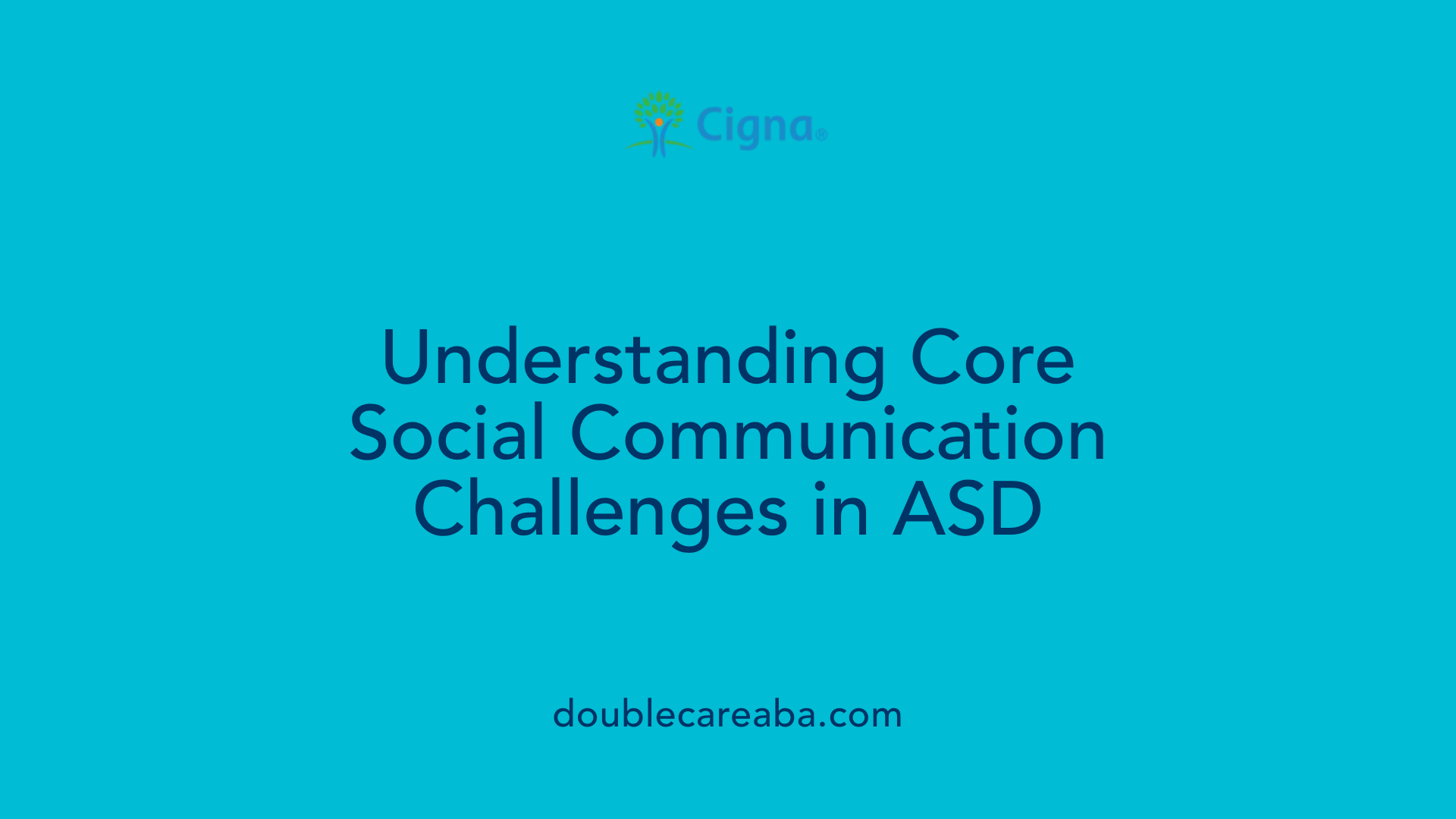
What are the core social communication deficits in DSM-5 autism diagnosis?
In DSM-5, the diagnosis of autism spectrum disorder (ASD) emphasizes persistent difficulties across several areas of social communication and interaction. These core deficits include problems with social-emotional reciprocity, nonverbal communicative behaviors, and relationship management.
Social-emotional reciprocity relates to challenges in engaging in natural, back-and-forth social exchanges. Individuals may struggle with initiating or responding appropriately in conversations, sharing interests, or understanding others' emotions. For example, they might have trouble returning a smile or engaging in typical give-and-take interactions.
Nonverbal communicative behaviors are often atypical or diminished in ASD. This can include poor eye contact, limited facial expressions, unusual gestures, or body language. Such difficulties hinder the effective conveyance and interpretation of social signals.
Developing, maintaining, and understanding relationships pose additional challenges. Individuals may find it hard to make friends, adapt to social rules, or understand social cues. They might have trouble with social imagination, which affects their ability to relate to others across different contexts.
These deficits are not only persistent but also manifest early in development. They significantly impair social functioning, affecting educational, occupational, and personal relationships.
How do social difficulties manifest in individuals with ASD?
People with ASD often exhibit a range of observable social difficulties. One common sign is reduced or absent eye contact, which can make interactions appear distant or inattentive.
They may also display delayed or unusual gestures, such as hand-flapping or repetitive motor movements, which can seem out of place in social settings. Facial expressions might be limited or display expressions that do not match the conversation or situation.
Initiating and sustaining conversations can be especially challenging. Those with ASD might not respond to social overtures or may struggle to grasp the social norms of turn-taking in conversations.
Understanding others’ emotions and intentions frequently presents a difficulty. This can lead to misunderstandings or social withdrawal, further impacting their ability to form and maintain friendships.
Adapting behavior across different social environments can also pose problems. For instance, behaviors appropriate in one context might be inappropriate in another, making social navigation hard.
Additionally, many individuals with ASD show a decreased interest in social activities, which can result in social isolation.
All these manifestations contribute to impairments in social and occupational functioning, emphasizing the importance of early identification and tailored support strategies.
Restricted and Repetitive Behaviors in DSM-5 ASD
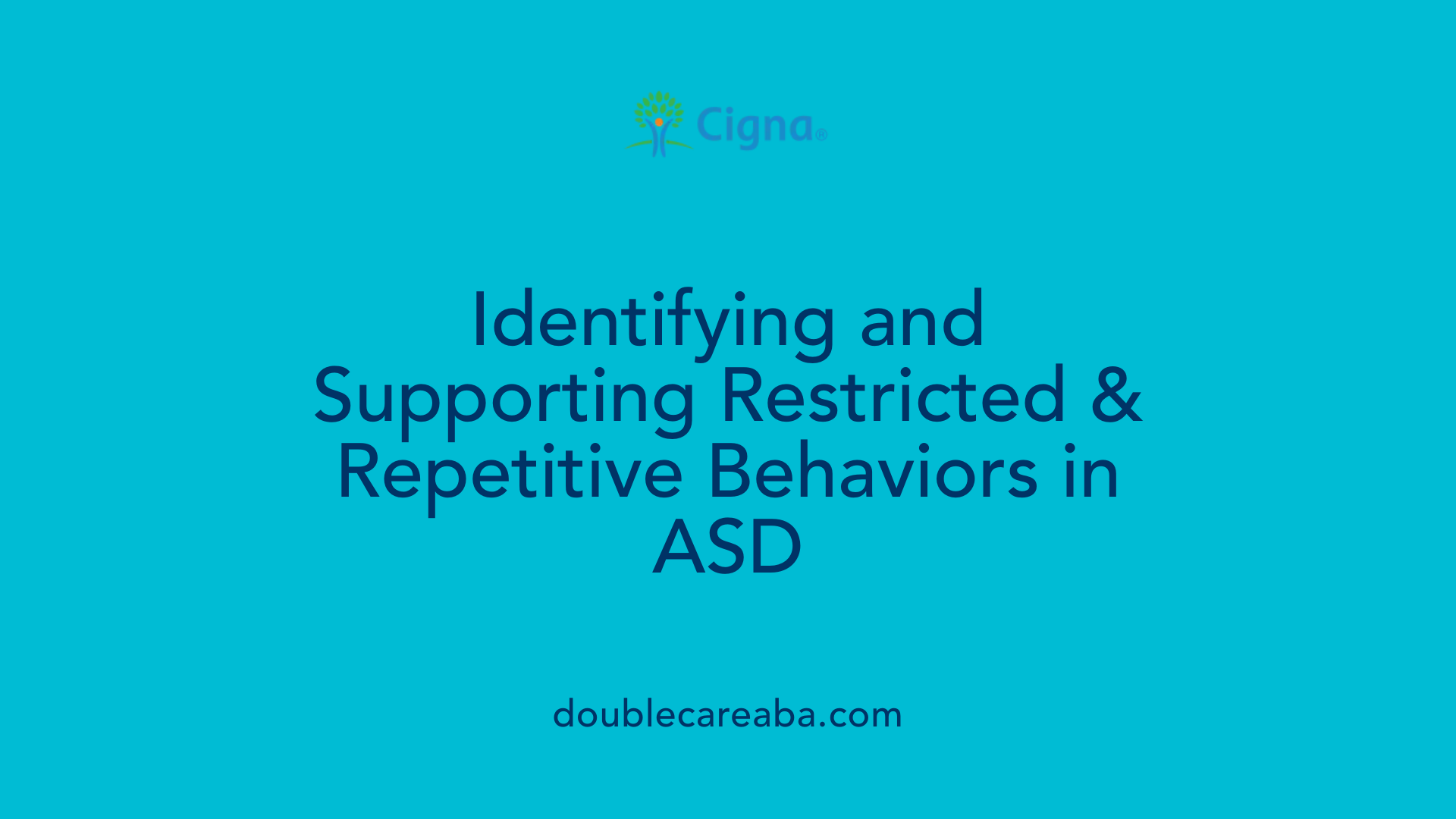
What are the behavioral features associated with ASD in DSM-5?
DSM-5 identifies restricted and repetitive behaviors as a fundamental aspect of autism spectrum disorder. To meet this criterion, individuals must display at least two out of four specific behaviors. These behaviors include stereotyped movements, such as hand flapping, rocking, or flicking objects, which are repetitive and often persistent from early childhood.
Additionally, the manual highlights speech or object use that is unusual or repetitive, like echolalia or repetitive use of objects in a stereotypical manner.
Inflexibility regarding routines and environmental changes, often accompanied by a strong insistence on sameness, characterizes another behavior pattern. Individuals may become distressed by minor changes or transitions, preferring strict routines.
The DSM-5 also emphasizes the presence of highly restricted, intense interests that are abnormal in focus or scope—such as fixating on specific topics or objects to an extreme degree.
Lastly, many individuals with ASD exhibit hyper- or hyporeactivity to sensory stimuli. This may include overreaction or underreaction to sounds, textures, lights, or smells, leading to behaviors like covering ears, avoiding certain textures, or seeking sensory input in unusual ways.
These behaviors are often evident early in childhood and can significantly interfere with daily life, social interaction, and learning.
How do sensory sensitivities relate to ASD?
Sensory sensitivities are a central component of restricted and repetitive behaviors in ASD. Many affected individuals experience either hypersensitivity or hyposensitivity to sensory input. For example, hypersensitivity may cause discomfort or distress in noisy or brightly lit environments, leading to behaviors such as covering ears, avoiding specific textures, or withdrawing from sensory-rich situations.
Conversely, hyposensitivity might result in seeking intense sensory experiences, like spinning objects or grasping textures for prolonged periods. These sensory processing differences can influence behavior patterns, environmental responses, and social interactions.
The presence of sensory sensitivities often exacerbates behavioral challenges, making daily activities and social engagement more difficult. Recognizing and accommodating these sensitivities is crucial for supporting individuals with ASD in various settings.
Developmental Onset and Impairment in ASD
When do symptoms of autism typically appear according to DSM-5?
According to DSM-5, signs of autism spectrum disorder often emerge early in development, usually before the age of one. These initial signs can include limited eye contact, lack of response to name, or restricted interest in objects. However, the full range of symptoms might not be fully observable until social and communication demands increase, such as during toddler years or school age. In some cases, children may learn to mask certain behaviors through learned strategies, making early signs less obvious. As children grow and social environments become more complex, symptoms may become more noticeable. This emphasizes the importance of early screening and observation to facilitate timely diagnosis and support.
Do autism symptoms change over time?
While the core characteristics of autism—such as social communication difficulties and repetitive behaviors—generally remain constant, their expression can change over time. For some individuals, symptoms may lessen or become less obvious due to adaptive coping strategies or interventions. For example, improvement in language skills or social understanding can mask certain deficits. Conversely, developmental challenges or increased social expectations might lead to heightened difficulties later in life.
Early intervention plays a vital role in helping individuals develop skills that can reduce the impact of symptoms on daily functioning. The severity and presentation of symptoms can fluctuate based on environmental factors, support systems, and individual differences. Recognizing that symptoms can evolve underscores the importance of ongoing assessment and tailored support throughout life stages.
How do symptoms impact functioning?
The presence and severity of ASD symptoms directly influence an individual's social, educational, and occupational experiences. Early signs may cause delays in language development, challenges in forming friendships, and difficulties in adapting to new routines. Over time, these challenges can lead to impairment in multiple domains such as employment, independent living, and social relationships.
The DSM-5 underscores that symptoms cause
Assessing and Diagnosing Autism in Line with DSM-5
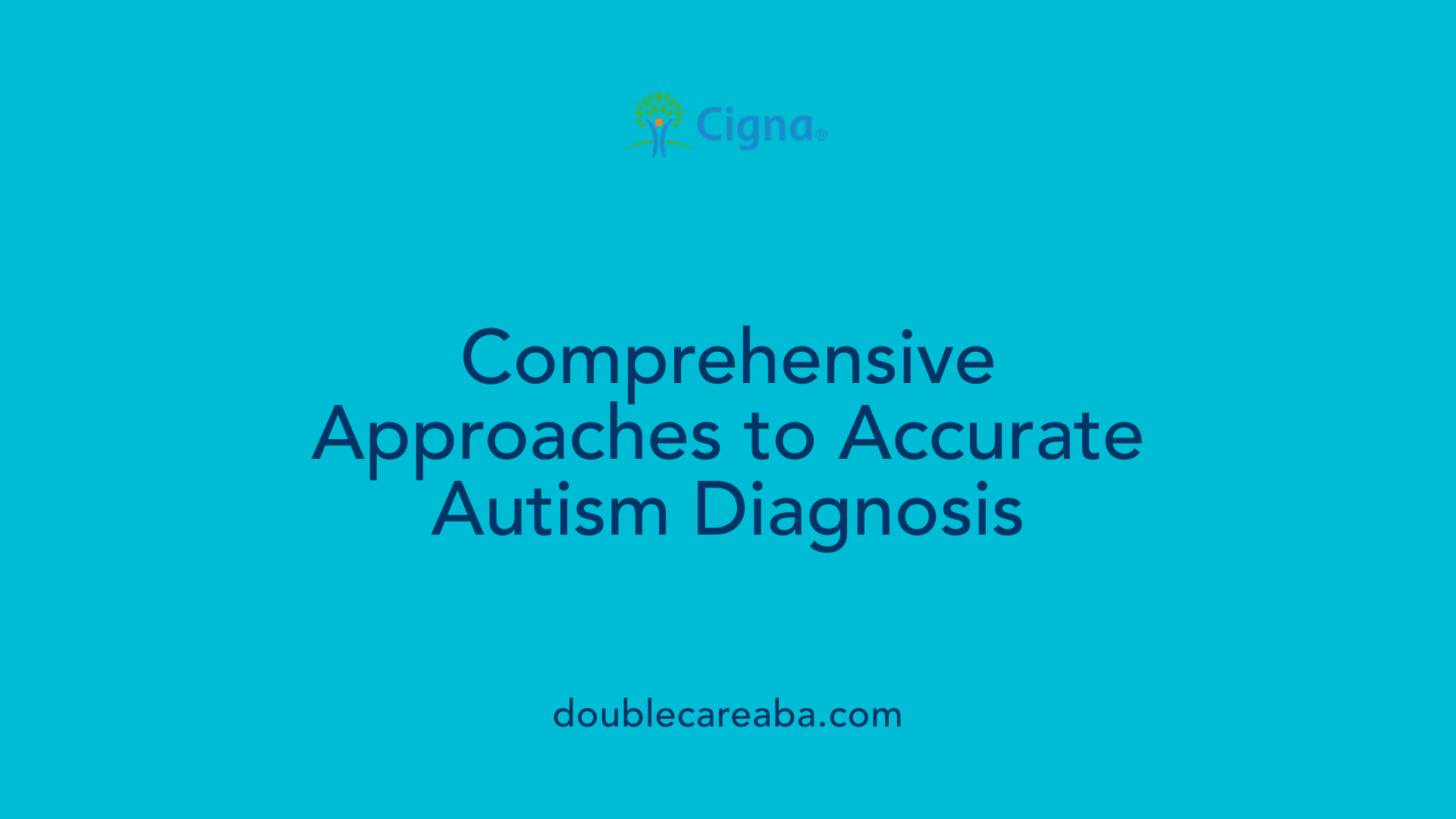
What is involved in diagnosing autism as per DSM-5 guidelines?
Diagnosing autism spectrum disorder (ASD) following DSM-5 criteria involves a thorough evaluation by trained professionals, such as psychologists, psychiatrists, or pediatricians. The process starts with collecting comprehensive developmental histories, which include information about early childhood behaviors and developmental milestones.
During the assessment, clinicians conduct direct behavioral observations to identify symptoms consistent with DSM-5 specifications. They look for persistent deficits in social-emotional reciprocity, nonverbal communication, and relationship development, as well as restricted, repetitive behaviors or interests.
A critical component is gathering detailed reports from parents, caregivers, or teachers, which helps document the presence and severity of symptoms across different contexts. These reports are essential because ASD manifestations can vary with age and environment.
Clinicians also evaluate whether the individual exhibits behaviors like abnormal social approach, failure in back-and-forth conversation, or difficulty in initiating and maintaining social interactions. They check for at least two of four specific restricted and repetitive behaviors: stereotyped movements, insistence on routines, intense interests, or unusual sensory responses.
Equally important is determining that these symptoms are present early in development, even if they become more apparent later when social demands increase. The assessment aims to rule out other explanations such as intellectual disability or other neurodevelopmental conditions that might better account for observed behaviors.
To support diagnosis, practitioners often utilize standardized tools specifically designed for ASD. These include structured interviews and observation schedules that evaluate the presence and severity of core symptoms.
Role of standardized tools and caregiver reports
Standardized instruments play a vital role in ensuring diagnostic reliability. Tools such as the Autism Diagnostic Observation Schedule (ADOS) and the Autism Diagnostic Interview-Revised (ADI-R) provide structured formats for assessing behaviors aligned with DSM-5 criteria.
The ADOS involves direct observation of social and communicative behaviors in a controlled setting. It helps determine if behaviors like eye contact, gestures, and reciprocity meet criteria for ASD.
The ADI-R gathers detailed developmental histories through a semi-structured interview with parents or caregivers. It covers early developmental behaviors, language acquisition, social interactions, and repetitive behaviors.
Both tools are highly valid when administered by trained professionals, reducing subjective biases. They complement clinical judgment by providing objective, quantifiable data.
Caregiver reports are particularly crucial because they offer insights into behaviors that may not be evident during clinical sessions, especially in naturalistic settings. These reports facilitate a comprehensive understanding of the individual’s typical functioning across different environments.
Clinical judgment and DSM-5 criteria
While standardized assessments are invaluable, the ultimate diagnosis relies on clinical judgment. Professionals interpret the data from tools, observations, and history reports within the framework of DSM-5 criteria.
They confirm whether the individual exhibits persistent deficits in social communication and interaction across multiple contexts, along with documented restricted and repetitive behaviors.
Clinicians also assess the impact of these symptoms on daily functioning, including social relationships and occupational or academic performance. The severity levels outlined by DSM-5—requiring support, substantial support, or very substantial support—help tailor intervention plans.
Furthermore, clinicians ensure that symptoms are not better explained by other conditions like intellectual disability or mental health disorders. This differential diagnosis is vital for accurate classification and appropriate intervention.
In essence, diagnosing ASD according to DSM-5 involves a blend of standardized assessments, detailed developmental histories, behavioral observations, caregiver input, and professional judgment. This comprehensive approach ensures an accurate diagnosis that guides effective support and interventions.
Severity Levels and Support Needs in ASD
How does DSM-5 classify the severity of autism spectrum disorder?
The DSM-5 categorizes autism spectrum disorder (ASD) into three support levels based on the intensity of symptoms and the amount of assistance an individual needs. These levels—Level 1, Level 2, and Level 3—help clinicians determine the scope of intervention required.
Level 1 (Requiring Support): Individuals at this level exhibit noticeable impairments in social communication and behavior, but they can often function with minimal support. They might require some assistance in social situations or with unfamiliar environments to help improve their interactions.
Level 2 (Requiring Substantial Support): This level describes individuals with more pronounced challenges. They face significant difficulties in social communication and behavior regulation that interfere with daily functioning. These individuals typically need structured support and interventions across multiple settings.
Level 3 (Requiring Very Substantial Support): This describes the most severe level of ASD, where individuals have severe deficits in social communication, minimal responses, and behaviors that greatly hinder independence. They usually need intensive, around-the-clock support to manage daily activities.
These classifications are essential for creating personalized care plans, helping caregivers and professionals understand the intensity of intervention needed, and tracking progress.
What are the clinical implications of severity classifications?
The severity designation in DSM-5 has direct consequences for treatment strategies and resource distribution. For individuals classified at Level 1, interventions may focus on social skills training, environmental modifications, and communication aids that foster independence.
For those at Level 2, more structured behavioral therapies, such as applied behavior analysis (ABA), are often necessary. Support in educational settings and ongoing social skills programs become vital to address more persistent impairments.
Level 3 individuals require the most extensive support, including specialized therapeutic services, specialized schooling, and sometimes medical oversight. These individuals often need daily assistance in routines, communication, and managing sensory sensitivities.
Understanding these support levels allows clinicians to set realistic goals, adjust interventions over time, and allocate resources effectively. It also informs families about expectations and helps in planning long-term care arrangements.
Support levels overview table
| Level of Support | Description | Typical Interventions | Care Implications |
|---|---|---|---|
| Level 1 | Mild impairments, can manage with minimal support | Social skills coaching, environmental adjustments | Targeted support, monitoring, and periodic reassessment |
| Level 2 | Moderate challenges requiring structured interventions | ABA therapy, social skills groups, structured routines | Regular, intensive support in multiple settings |
| Level 3 | Severe deficits needing constant supervision | 24-hour care, specialized therapies, adaptive technologies | Continuous supervision, full assistance for daily activities |
This structured approach helps define the support framework necessary for each individual's unique needs, guiding effective and personalized care strategies.
Utilizing DSM-5 in Clinical Practice and Future Perspectives
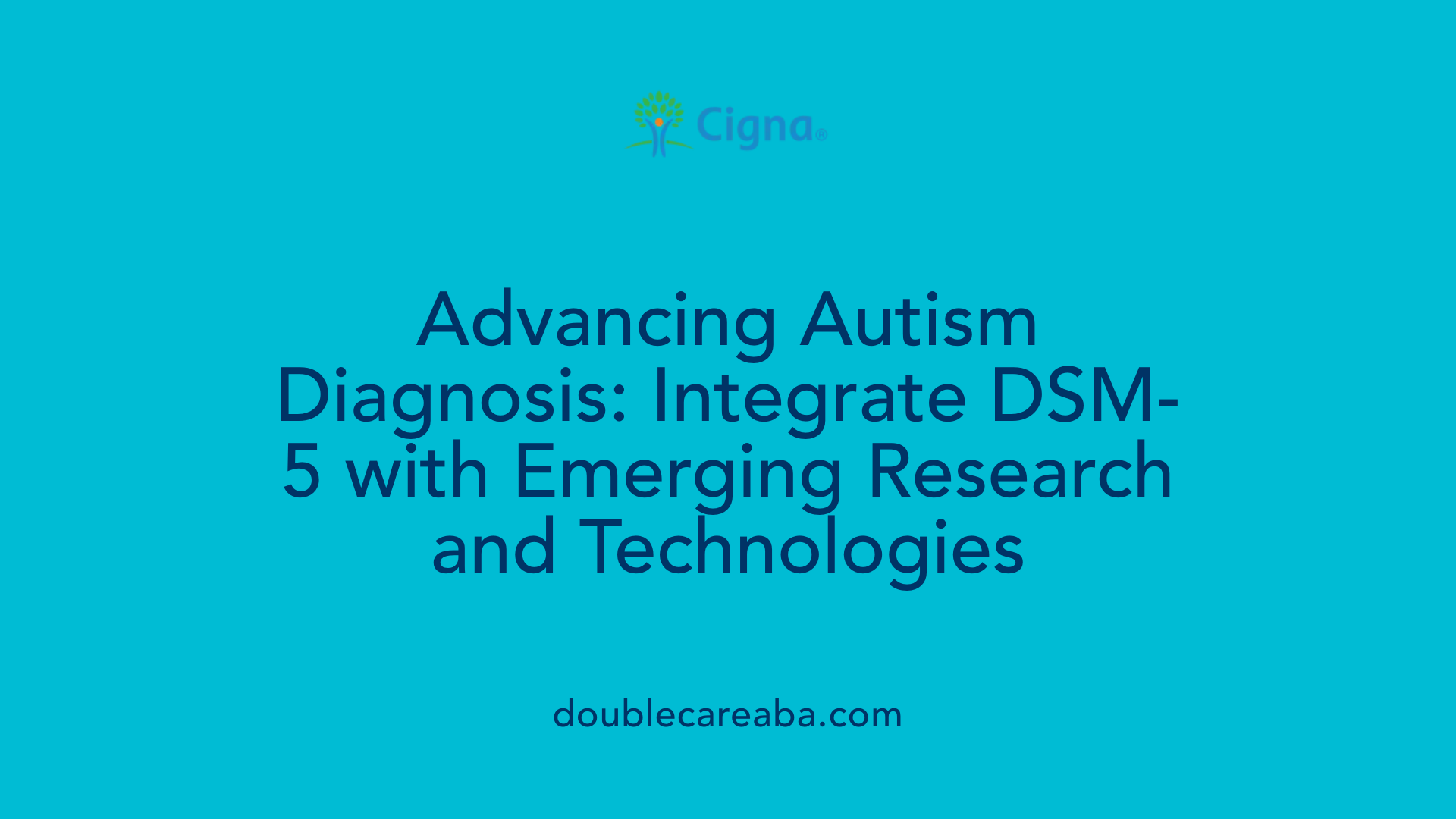
Who is qualified to diagnose autism according to DSM-5?
Diagnosing autism spectrum disorder (ASD) based on the DSM-5 criteria requires the expertise of qualified healthcare professionals. This includes licensed psychologists, psychiatrists, pediatricians, and clinicians trained specifically in autism assessments. These specialists perform comprehensive evaluations that involve detailed developmental histories, behavioral observations, and standardized assessment tools such as the Autism Diagnostic Observation Schedule (ADOS) and the Autism Diagnostic Interview-Revised (ADI-R).
The role of these trained professionals is crucial, as they interpret complex information within the context of DSM-5 standards to ensure an accurate diagnosis. Importantly, DSM-5 emphasizes that diagnosis should be rooted in clinical judgment that considers multiple sources of evidence, rather than relying solely on assessment tools. This approach allows clinicians to distinguish ASD from other neurodevelopmental or mental health disorders effectively.
Guidelines for diagnosis
The DSM-5 provides clear guidelines to facilitate accurate diagnosis of ASD. All three social communication and interaction criteria must be met:
- Difficulties in social-emotional reciprocity
- Challenges with nonverbal communicative behaviors used for social interaction
- Problems in developing, maintaining, and understanding relationships
In addition, at least two of four restricted and repetitive patterns of behavior are required:
- Stereotyped or repetitive movements or speech
- Insistence on sameness or inflexibility in routines
- Highly restricted, fixated interests
- Hyper- or hyporeactivity to sensory input
These symptoms must be present early in the developmental period, though they might not be fully observable until social demands exceed the child’s capacities or are masked by learned strategies. It is also mandatory to exclude diagnoses better explained by intellectual disabilities or other neurological conditions.
Severity levels are defined within the criteria to reflect the support needs of individuals, ranging from requiring support to requiring very substantial support. Clinicians must document the presence and severity of symptoms, consistent with DSM-5 guidelines, to determine the appropriate intervention and support strategies.
Emerging research and updates
The landscape of autism diagnosis is rapidly evolving, with emerging research focusing on several fronts. Future directions include refining diagnostic criteria to improve sensitivity and specificity, incorporating advances in neurobiological and genetic research to develop biomarkers, and personalizing diagnostic processes.
Recent updates and ongoing investigations aim to understand the biological underpinnings of ASD better. This knowledge could lead to more precise, biologically informed diagnostic tools that go beyond behavioral observation alone.
Moreover, there is a growing recognition of the importance of viewing ASD as a lifelong condition. Diagnostic guidelines are increasingly sensitive to late or evolving manifestations across the lifespan, emphasizing the need for adult diagnosis and support.
Training programs are expanding internationally, aiming at a broader dissemination of best practices and ensuring accessibility for diverse populations globally. This ongoing effort seeks to promote earlier diagnosis, timely intervention, and improved quality of life for individuals with ASD.
| Aspect | Current Focus | Future Direction | Additional Notes |
|---|---|---|---|
| Diagnostic Criteria | Based on behavioral observation, developmental history | Incorporation of biomarkers, genetic testing | Could enhance precision of diagnosis |
| Severity Classification | Levels 1 (support needed) to 3 (very substantial support) | Refinement for better individualized support | Critical for tailoring interventions |
| Age of Diagnosis | Usually by age 2-3, with recognition in early development | Lifelong assessment, adult diagnosis | Broadens understanding of ASD across lifespan |
| Training and Dissemination | Focused on clinical expertise development | Global training efforts, telehealth diagnostics | Aims to improve access worldwide |
| Research Focus | Behavioral and neurodevelopmental features | Biological markers, neuroimaging, genetics | Promising areas for future breakthroughs |
The future of autism diagnosis promises a more personalized, biologically grounded approach that will complement current behavioral assessments. As research progresses, clinicians will be better equipped to provide accurate diagnoses and tailor interventions effectively, ultimately fostering better outcomes for individuals across the spectrum.
Summary and Final Thoughts
The DSM-5 provides a structured, nuanced framework for diagnosing Autism Spectrum Disorder, emphasizing persistent social communication deficits and restricted, repetitive behaviors as core features. The diagnostic process involves a combination of clinical evaluation, standardized assessments, and informed judgment by trained professionals. Severity levels aid in tailoring interventions and support, enabling personalized care plans. As research advances, ongoing updates aim to refine diagnostic criteria and assessment tools, ultimately improving outcomes for individuals across the lifespan. Recognizing the early signs and understanding the comprehensive criteria outlined in DSM-5 are crucial steps in ensuring timely diagnosis and effective intervention.
References
- Autism diagnostic criteria: DSM-5
- Clinical Testing and Diagnosis for Autism Spectrum Disorder
- Diagnostic Criteria for Autism Spectrum Disorder in the DSM-5
- DSM-5 Diagnostic Criteria
- Criteria and tools used in an autism assessment
- Autism Spectrum Disorders: Diagnosis and Treatment
- What Is Autism Spectrum Disorder?
- DSM-5 Criteria for Autism Explained (In Picture Form)
- The Formal Diagnostic Criteria for Autism















